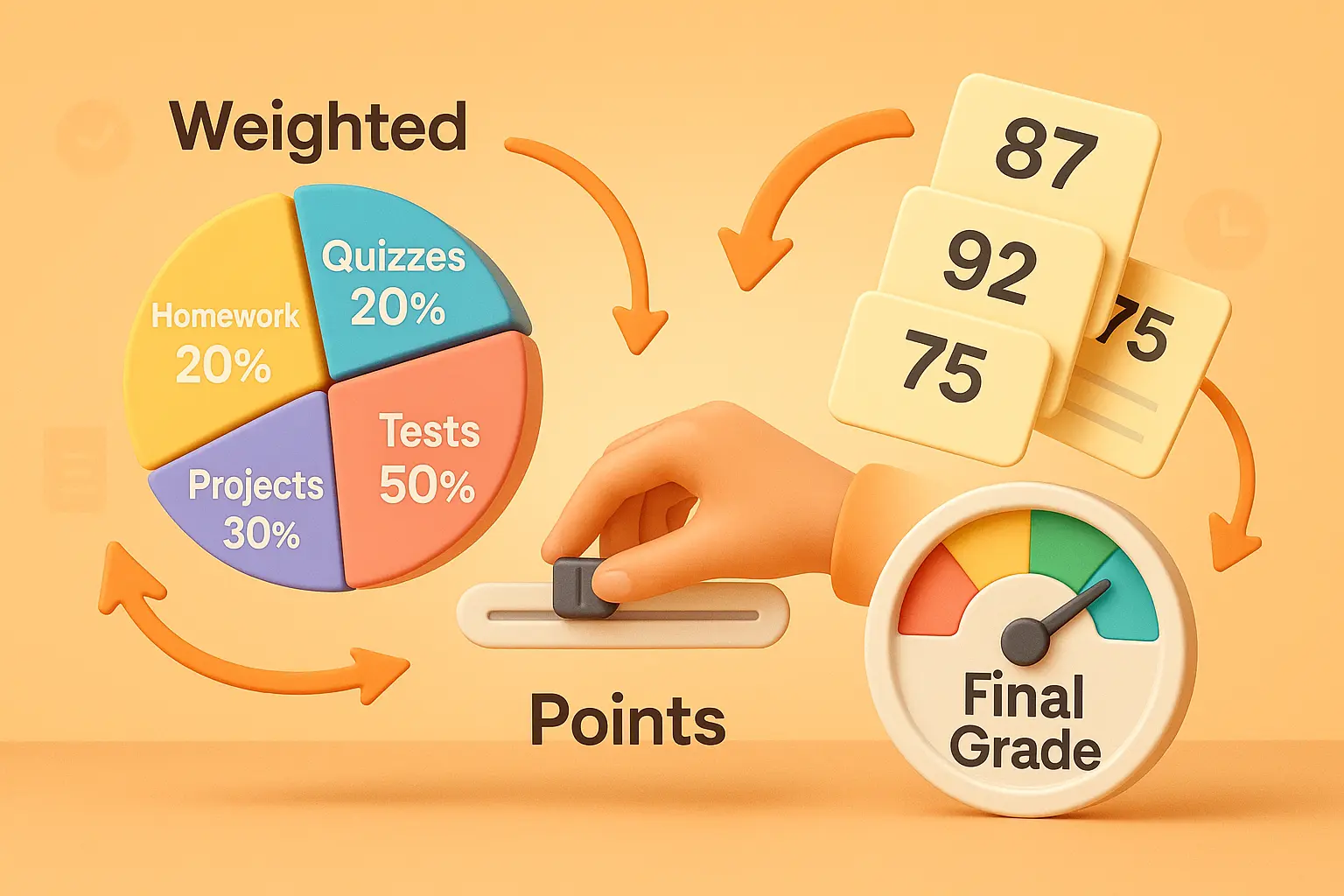Introduction
ESL and newcomer teachers don’t teach in the same conditions as homeroom teachers. Your students arrive from different classes, stay with you for just 30–45 minutes, and then go back to their primary classroom — but you’re still responsible for showing progress.
At the same time, the school expects you to:
- note behavior,
- support English development,
- document that ESL services were actually provided,
- and share updates with each student’s homeroom teacher.
Most behavior systems online are built for “one teacher – one class.” The moment a student is pulled out for ESL, that model stops working: behavior becomes fragmented, no one knows what happened in ESL, and your notes get lost.
This article explains a simple, repeatable way to track behavior in ESL pull-out groups so that:
- it takes you under a minute per session,
- homeroom teachers can read the data without extra explanations,
- administrators can see that services and supports were delivered.
It’s written for ESL / EL / ELD / newcomer pull-out teachers working across multiple homerooms.
1. Why behavior in ESL pull-out is a separate problem
Pull-out ESL has three constraints most blogs ignore:
- You don’t control the main classroom. The homeroom sets the rules and expectations. You can’t just introduce a new behavior system that contradicts theirs.
- You see students from different homerooms. One group can include students from 2–4 different classes, even different grade levels.
- You have very short time. If your block is 30 minutes, you cannot waste 7 of them filling in a behavior chart.
Because of that, ESL behavior tracking must be:
- fast (1–2 taps),
- consistent across all students,
- readable by other teachers.
So the goal is not “perfect behavior chart.” The goal is a shared language about behavior between ESL and homeroom.
2. What we actually need to track in ESL sessions
In ESL pull-out, “behavior” is often tied to language use, not to general misconduct. We don’t need 20 behavior categories. We need the 5–7 that actually affect language progress.
Key behaviors to track:
- Participation in English (did the student attempt to speak/answer?)
- On-task during ESL activity (stayed with the task, not hiding)
- Transition behavior (entering ESL calmly, returning to class calmly)
- Work refusal / shutdown (common with newcomers who are overwhelmed)
- Off-topic/interrupting in L1 (talking in L1 when L2 was expected)
- Needed extra support (interpreter peer, visual aid, sentence frame)
These are the behaviors homeroom teachers usually don’t see — and that’s why they’re worth logging.
3. Create a micro behavior code system (5 - 7 codes)
The mistake many schools make: they copy the full PBIS / ClassDojo / schoolwide chart into ESL. That’s too heavy. ESL needs a micro set.
Here is a simple code set you can use:
- P+ – Participated in English (answer, reading aloud, role play)
- ON – On task (followed activity, stayed with group)
- TR – Good transition (came/returned calmly)
- WR – Work refusal / shutdown / “I don’t know” loop
- INT – Interrupting / talking off-topic (L1 or L2)
- SUP – Needed extra support (visuals, modeling, peer)
Why it works:
- It’s short → easy to remember.
- It’s neutral → not blamey.
- It’s ESL-specific → homeroom learns what matters in ESL.
- It’s consistent → you can use the same codes across multiple homerooms.
You can display these codes in your ESL room or on the top of your logging sheet/app so you don’t reinvent them daily.
4. A realistic 30–40 minute workflow
Let’s map a real ESL block.
Before class (30 seconds):
- Open today’s ESL group (Lekktura lets you group students from different homerooms).
- You see the list of students for this pull-out.
During class (live logging):
- Do not log every student every 5 minutes.
- Only log changes: for example, 3 students were fine → you don’t touch them. 1 student refused to read → you tap
WR. - If a student tried speaking in English after refusing last time → tap
P+.
End of class (1 minute):
- Quick review: did anyone need support? mark
SUP. - Save.
That’s it. This is important: ESL behavior tracking must not add grading-level workload. If it takes more than a minute, teachers stop doing it.
5. Connecting behavior to multiple homerooms
This is the part that’s usually missing online.
In many systems, behavior is tied to a class. But ESL works across classes. So the data model must be behavior per student, not behavior per class.
What this gives you:
- You can pull students from Homeroom A, B, and C into one ESL group.
- You still log behavior once.
- Each homeroom teacher can see: “Today in ESL: TR, P+, ON.”
In Lekktura this is the natural flow: you create an ESL group, add students from different homerooms, log behavior once, and the data stays with the student. Then homeroom teachers and admin can view it from their side.
If you do this in Google Sheets or on paper, the problem is duplication: you have to copy the same note to 2–3 teachers. That’s why most ESL teachers stop logging — it’s too much admin.
6. What to send back to homeroom (and what NOT to send)
Homeroom teachers don’t want a novel. They want to know:
- did he come,
- did he work,
- did he refuse,
- was there a behavior problem I should reinforce?
So the best format is a short ESL behavior snapshot.
Daily snapshot example:
ESL – 10/30/2025
Student: Miguel R.
Codes: P+, TR
Note: Participated in oral practice; transition back was smooth. – ESL
Weekly grouped example (for 4–6 ESL students):
ESL Behavior Summary – Week of 10/27
- Areli G. – ON, P+, TR
- Miguel R. – P+, SUP (needed visuals)
- Tuan N. – WR x2 (work refusal on Wed/Thu)
- Reported by: ESL
This is easy to read and to paste into homeroom communication.
What not to send:
- long descriptions of your whole ESL lesson,
- generalized comments (“needs to participate more”) without date,
- codes the homeroom doesn’t understand.
7. Attendance + behavior = early warning
Another ESL-specific issue: sometimes the student “misses” ESL because the class was on a field trip, benchmark testing, assembly, or the teacher forgot to send them.
If you log attendance together with behavior, you can answer admin quickly:
- “Yes, ESL minutes were offered.”
- “No, the student wasn’t sent.”
- “Yes, the student was present but refused (
WR).”
This is especially useful for multilingual learners who are borderline for services and admin wants documentation.
8. Communicating with EL families (without sounding punitive)
Many EL families receive school communication only when something is wrong. Your behavior notes should not sound like discipline reports. They should sound like progress reports.
Templates you can reuse:
- Positive / participation
Today in ESL your child participated in English speaking activities and stayed on task. This helps with listening and vocabulary.
- Needed support
Today your child needed extra support to follow the ESL activity. We used pictures and sentence frames. You can help at home by asking them to repeat new words.
- Refusal / shutdown
Today your child did not want to complete the ESL activity. This sometimes happens when the task is new. We will try again next time.
Keep sentences short, plain, and translatable.
9. Ready-to-use codes and comments
Codes:
- P+ – participated in English
- ON – on task
- TR – good transition
- WR – work refusal / shutdown
- INT – interrupting / off-topic talk
- SUP – needed extra support
Short comments (120 characters):
- “Spoke in English when prompted.”
- “Stayed on task during reading.”
- “Returned to homeroom calmly.”
- “Refused task today, try again tomorrow.”
- “Needed visuals / modeling.”
- “Talked in Spanish when English was expected.”
These can be preloaded and selected in 1 click. That’s where tools like Lekktura save time.
10. How to set it up in Lekktura
- Create an ESL group in your Lekktura account.
- Add students from different homerooms. Lekktura keeps behavior per student, so it’s okay that they are from different classes.
- Enable behavior codes for this group and add the ESL-specific ones (P+, ON, TR, WR, INT, SUP).
- Log during the lesson from your laptop or tablet — only changes.
- Export or share weekly behavior snapshots with homeroom / admin.
- Optional: connect to attendance to show that the student actually received ESL minutes.
This makes your ESL room “visible” to the rest of the school without extra spreadsheets.
11. Why this topic matters for schools
When ESL behavior is invisible:
- homeroom teachers think “he’s fine with you, only misbehaves with me,”
- admin can’t tell if the ESL program is delivered,
- families think ESL is only playtime.
When ESL behavior is logged with clear codes:
- everyone sees the same data,
- small problems (transition, refusal) are caught early,
- ESL teacher is recognized as an instructional teacher, not just support.
That’s the whole point.
FAQs:
1) How is ESL pull-out behavior different from regular classroom behavior tracking?
ESL pull-out sessions are shorter, students come from multiple homerooms, and behavior often relates to language use (participation, transition, work refusal), not just misbehavior.
2) What’s the minimum number of behavior codes I should use?
5–7 codes is ideal. More than that and teachers stop logging.
3) Can I use the same codes for students from different homerooms?
Yes — that’s the point. One shared ESL code system makes your notes readable to all homeroom teachers.
4) How often should I log behavior in ESL?
Once per session per student (or only when behavior changes). ESL blocks are short, so logging must be fast.
5) What do I do if a student refuses to work every time?
Log it consistently (e.g. WR) so homeroom and admin can see a pattern, not a one-time complaint.
6) Do I need to send a daily report to every homeroom?
Not always. Many schools do daily for problem students and weekly for everyone else.
7) Can behavior be tied to attendance for ESL minutes?
Yes. Marking “present in ESL” plus behavior creates a service log that admins like.
8) How do I track behavior for students who speak very little English?
Focus on participation attempts, following directions, and transitions — not on perfect English.
9) How do I share ESL behavior notes with two households?
Use short, neutral messages and send the same summary to both guardians so no one feels left out.
10) What if the school already uses PBIS or ClassDojo?
You can still use a micro ESL set — just map your 5–7 ESL codes to the schoolwide categories.
11) Should I write full sentences or just codes?
Codes are faster. Add a 1–2 sentence note only when the behavior needs context.
12) Can paraprofessionals or aides log ESL behavior too?
Yes, if they use the same code list. Consistency is more important than who logs it.
13) How do I show improvement over time?
Export/filter by student and show fewer WR / INT and more P+ / ON over weeks.
14) What if the homeroom teacher never reads my notes?
Switch to a weekly grouped summary — it’s shorter and more likely to be opened.
15) Can I use this system for push-in ESL, not pull-out?
Yes, but log only what is ESL-specific (participation in English, needed support).
16) How do I keep logging from taking over my lesson?
Preload codes in your platform (like Lekktura) and log from a tablet during transitions.
17) What language should I use when messaging EL families?
Use simple, non-punitive English that can be auto-translated: “Today your child participated in ESL and stayed on task.”
18) Why not just let the homeroom track all behavior?
Because they don’t see the student in ESL. Without ESL data, the school sees an incomplete picture.
Conclusion
ESL pull-out teachers don’t need a giant classroom management system. They need a short, repeatable, data-friendly way to say: “Here’s what happened with this student in ESL today.”
By using:
- 5–7 ESL-specific codes,
- logging only in 1–2 taps,
- and sending short, readable summaries to homerooms and families,
you make ESL behavior visible and useful — without adding paperwork.
If you want to try this exact workflow in a tool that already supports mixed groups, behavior codes, and exports, you can set it up in Lekktura here: https://lekktura.com/
If you tell me your target grade span (K–2 vs 3–5 vs MS ESL), I can add example codes and comments for that level too.




